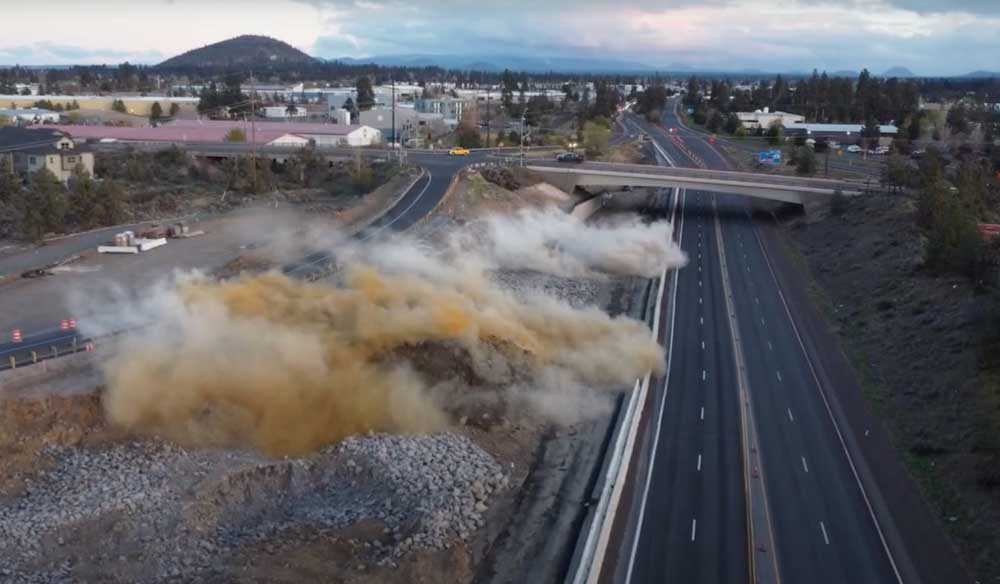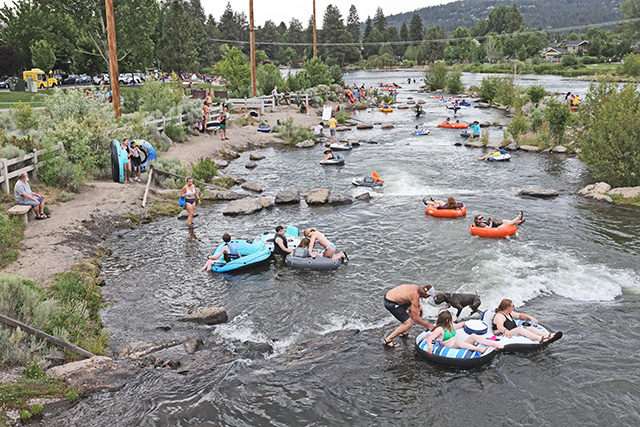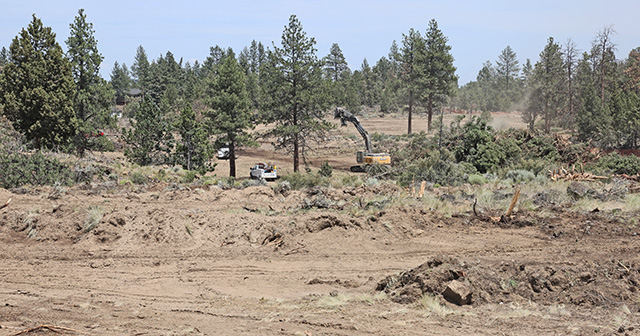Video: Fire in the hole! ODOT finishes Highway 97 blasts
Published 5:15 am Friday, May 3, 2024

- This screenshot from a Connect Central Oregon video shows dust and debris floating over the site where crews blasted basalt rock as part of the realignment of U.S. Highway 97 on Bend.
State transportation officials concluded the sixth and final blast on Tuesday for the Bend North Corridor Project, needed to clear the hardened basalt rock that was obstructing the department’s plan to realign U.S. Highway 97.
Each blast, along the highway near Empire Avenue, only delayed traffic for approximately seven minutes and the roads typically reopened within a minute after detonation, said Zach Davis, Bend North Corridor resident engineer for the Oregon Department of Transportation project.
But the ease with which traffic resumed does not reflect the intricate planning and safety procedures which make that possible, he told The Bulletin.
“We were actually planning this blasting operation for months before it happened,” Davis said.
Planning for fly rock
The blasting began March 25. No more are scheduled, but construction crews cannot say for certain if another detonation is required until the blasted basalt is removed. Davis said this is unlikely, however.
Before any blasting could be done, engineers like Davis had to create a plan that considered traffic flow, infrastructure constraints and even the composition of the rock they intended to break-up.
For the Bend North Corridor Project, the biggest consideration was getting traffic moving as quickly as possible once a blast was done, Davis said, and the best way to do that was to minimize fly rock — projectiles launched into the air — so that crews could efficiently clear the road after the blast. This was accomplished by reducing the power of the blast and keeping a protective layer of dirt that engineers called “the overburden.”
“Generally, when you’re rock blasting, you remove the rock that’s not solid from the process,” Davis said. “It’s something that you don’t need (and) you can just take an excavator and excavate it away. In this case, we actually left the overburden there as a protective blanket to minimize fly rock from projecting from the shot.”
The day of the blast
Months of planning culminated with each blast, which only takes a matter of minutes. Once the road was closed, a 5-minute warning horn sounded and the blasting area closely monitored. If anything moved through the area, the detonation was canceled, Davis said.
“After four minutes of observation, a final one-minute warning horn is sounded, and a call goes out over the radio warning all on communications that the blast will occur in one minute. Just prior to the blast, the blaster in charge yells, ‘Fire in the hole. Fire in the Hole. Here it goes,’ and then the trigger is pulled,” said Davis.
Once the blast is complete, the site was inspected to ensure there was no residual detonation cord. Then, any fly rock on the road was removed, traffic control lifted, and commuters allowed to continue on their way.
Ongoing detours and closures
The blasting was part of the project to realign Highway 97 and make improvements to U.S. Highway 20. ODOT projects the Bend North Corridor Project will conclude in December.
Currently, northbound traffic using Highway 97 is diverted to the newly built parkway on-ramp at Cooley Road that rejoins the existing highway just north of Grandview Avenue. The northbound on-ramp at Empire Avenue is also closed, leading traffic along the new parkway to the stoplight at Robal Lane. Both detours will be in effect until July when ODOT expects construction on northbound lanes to conclude.







